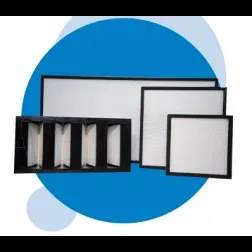Views: 0 Author: Site Editor Publish Time: 2025-11-10 Origin: Site











Content Menu
● What Are Pharmaceutical Consumables?
>> Characteristics of Pharmaceutical Consumables
● Key Differences Between Pharmaceutical Consumables and Medical Supplies
>> 4. Examples
● Importance of Understanding These Differences
● How Pharmaceutical Consumables Impact Patient Care
● How Medical Supplies Support Healthcare Operations
● Frequently Asked Questions (FAQs)
>> 1. Can pharmaceutical consumables be reused?
>> 2. Are all medical supplies disposable?
>> 3. How does regulation differ between these two categories?
>> 4. Why is it important to differentiate between them?
>> 5. Can patients purchase pharmaceutical consumables for home use?
Understanding the distinctions between pharmaceutical consumables and medical supplies is essential for healthcare professionals, caregivers, and patients alike. Both categories are vital in the medical field but serve different roles, functions, and uses. This article will explore these two important groups, clarify their definitions, highlight their key differences, and explain how each contributes to effective healthcare delivery.

Pharmaceutical consumables refer to items related specifically to the preparation, administration, and management of medications. These are single-use or limited-use products that support pharmaceutical processes and patient drug treatment. Examples include syringes, vials, ampoules, packaging materials, and related accessories used in pharmacies and hospitals.
Pharmaceutical consumables are typically disposable, designed to maintain hygiene and prevent contamination during medication handling and delivery. Their use is highly regulated to ensure patient safety.
Medical supplies cover a broader category of consumable items used in healthcare settings for diagnosis, treatment, prevention, and patient care. This includes bandages, gauze, gloves, surgical masks, catheters, thermometers, and other disposable aids.
Medical supplies support a wide array of healthcare activities—from wound care to infection control and routine patient monitoring. Like pharmaceutical consumables, many medical supplies are disposable and often single-use.
Pharmaceutical consumables are primarily involved in drug preparation and administration. For example, syringes are used to deliver medication doses safely and accurately. Medical supplies, meanwhile, serve varied healthcare needs ranging from protective equipment to wound management.
Pharmaceutical consumables are mostly used in pharmacy operations, clinics, and hospitals specifically related to medication handling. Medical supplies are used more widely throughout all healthcare settings, including hospitals, outpatient centers, and home care.
Because pharmaceutical consumables come into direct contact with drugs and patients during medication delivery, they face stringent regulations concerning sterility and safety. Medical supplies are also regulated but often have broader classifications depending on their use and risk level.
- Pharmaceutical Consumables: Syringes, needles, vials, blister packs, ampoules
- Medical Supplies: Gloves, masks, bandages, gauze, catheters
Knowing the distinction helps healthcare providers ensure proper stocking, handling, and usage. It also aids in budgeting and resource management to maintain effective healthcare services without waste.
Pharmaceutical consumables affect the accuracy, safety, and hygiene of medication administration. Using appropriate and sterile consumables prevents contamination and medication errors.
Medical supplies are fundamental in both preventive and therapeutic care. For example, gloves and masks protect healthcare workers and patients from infection, while bandages assist in the healing process.
Pharmaceutical consumables and medical supplies are both essential consumable products in healthcare but differ in purpose, use environments, and regulatory requirements. Recognizing their differences ensures safer patient care and more effective healthcare management.
Pharmaceutical consumables are generally designed for single use to maintain sterility and patient safety; reuse is typically not recommended.
Most medical supplies are disposable to prevent infection, but some items may be reusable with proper sterilization.
Pharmaceutical consumables often face stricter regulations focusing on sterility and compatibility with drugs, while medical supplies have varied regulations based on risk and use.
Differentiation aids in correct inventory management, budgeting, and ensuring appropriate product use for patient safety.
Some pharmaceutical consumables, like syringes for insulin injections, may be prescribed for home use under medical guidance.

[1](https://www.gethealthie.com/glossary/consumables)
[2](https://hmedicalinc.com/2025/01/03/difference-between-medical-supplies-and-medical-equipment/)
[3](https://www.winnermedical.com/medical-consumables-what-you-need-to-know.html)
[4](https://unifymedsupply.com/difference-between-medical-devices-and-medical-consumables-for-seniors-in-denver-colorado/)
[5](https://www.ncbi.nlm.nih.gov/books/NBK583746/)
[6](https://www.definitivehc.com/resources/glossary/consumable-medical-device)
[7](https://www.who.int/teams/health-product-policy-and-standards/assistive-and-medical-technology/medical-devices)
[8](https://www.medpac.gov/wp-content/uploads/import_data/scrape_files/docs/default-source/reports/jun17_ch7.pdf)
[9](https://www.henryschein.com/us-en/medical/default.aspx)
Hot Tags: China, Global, OEM, private label, manufacturers, factory, suppliers, manufacturing company
Client Overview:Our client is a highly reputable pharmaceutical company looking to upgrade its manufacturing facilities to meet stringent cleanliness and sterilization standards. They needed an experienced pharmaceutical equipment supplier to provide advanced CIP (Cleaning in Place) and SIP (Sterili
Client Overview:Our client, a pharmaceutical manufacturer, required a specialized silicone oil dispensing system to accommodate a range of pharmaceutical products with varying properties. Our Solution:As a leading pharmaceutical equipment supplier, we showcased our expertise in designing and manufac
Client Overview:Our client is a biomaterials company with diverse operations, requiring an efficient liquid dispensing system to meet their versatile production needs. Our Solution:As a leading pharmaceutical equipment supplier, we provided our client with a highly customized liquid dispensing syste
Client Challenge:A prominent Hangzhou-based pharmaceutical company sought to enhance its manufacturing processes and uphold water purity standards to meet stringent regulations. They required a state-of-the-art water treatment system. Our Solution:As a leading pharmaceutical equipment provider, we t
Content Menu● Understanding Liquid Filling Lines in Pharmaceuticals>> Types of Liquid Filling Lines● Key Pharmaceutical Consumables for Liquid Filling Lines>> Primary Consumables>> Secondary Consumables● Material Considerations for Consumables>> Common Materials Used● Regulatory and Quality Standard
Content Menu● Understanding Contamination Risks in Pharmaceuticals>> What Is Pharmaceutical Contamination?>> Consequences of Contamination● Role of Premium Pharmaceutical Consumables in Contamination Control>> What Are Pharmaceutical Consumables?>> Why Choose Premium Consumables?● Effective Strategi
Content Menu● What Are Pharmaceutical Consumables?>> Characteristics of Pharmaceutical Consumables● What Are Medical Supplies?>> Scope of Medical Supplies● Key Differences Between Pharmaceutical Consumables and Medical Supplies>> 1. Purpose and Application>> 2. Usage Environment>> 3. Regulatory Over